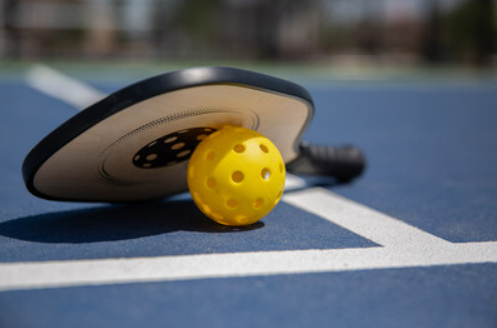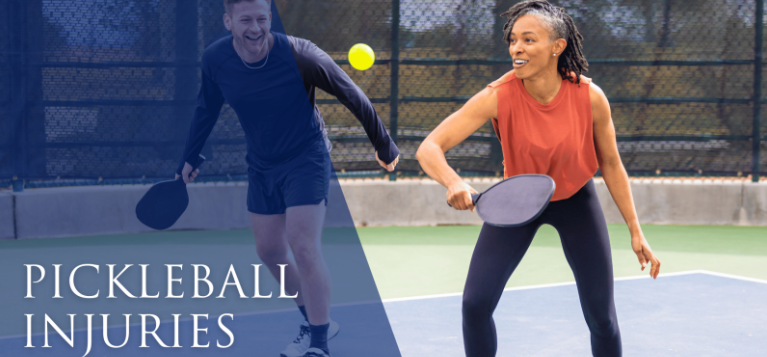Seniors who are trying to maintain their fitness have taken a particular interest in pickleball, but new data indicates that this popularity has also led to an increase in significant accidents.
A recent report, published this week at the annual conference of the American Academy of Orthopaedic Surgeons in San Francisco, shows that bone fractures associated with pickleball have grown 90-fold over the previous 20 years, with the majority of injuries happening in individuals ages 60 to 69.
According to researcher Dr. Kurt Spindler, an orthopedic physician at Cleveland Clinic in Florida, “despite its reputation as a low-impact sport, pickleball can pose serious risks for players, especially if they have weaker bones from osteoporosis.” Dr. Spindler made these remarks in a meeting news release. “It’s important to understand your risk profile for injury and to speak with your physician to see how you can lower your risk.” Similar to its cousin, tennis, pickleball is played on a badminton-sized court using wooden paddles and a perforated plastic ball. According to USA Pickleball, it is the nation’s fastest-growing sport, with 4.8 million players in 2021 and 8.9 million in 2023.

Pickleball
Crucially, the current investigation only examined fractures; it ignored some of the most frequent injuries, such as anterior cruciate ligament (ACL) damage and sprained ankles. According to NBC News, rotator cuff injuries, deteriorating arthritis, and tears or strains in the Achilles tendon are among the other prevalent pickleball ailments. What broke the majority of the study’s fractures? According to studies, 92% happened during falls.

Yasmine Ghattas, the study’s primary author and a student at the University of Central Florida’s College of Medicine in Orlando, told NBC News that “while pickleball is a great sport, nothing is without risk.” The researchers don’t think folks should put down their paddles, but they should be better prepared before they play. “Well-informed participation in any activity is key,” Ghattas said.

In the study, researchers turned to the Consumer Product Safety Commission’s National Electronic Injury Surveillance System, which includes a representative sample of injuries gathered from 100 U.S. emergency departments. Ghattas and her colleagues found descriptions of 377 pickleball-related fractures in the database between 2002 and 2022. When extrapolated to the entire U.S. population, that translated into roughly 5,400 pickleball-related fractures annually, NBC News reported. Women, especially those 65 and older, were more likely than men to break a bone. Most occurred in the forearms and hands. The researchers suspect they were related to osteoporosis or other bone-thinning conditions.

Even though women had more fractures overall, men were 2.3 times more likely to be admitted to the hospital after breaking a bone, the research found. Ghattas and her colleagues suspect that’s because men’s fractures tend to be in the bones of the lower body, which are more likely to lead to a hospital stay. As the sport has grown, there may be other contributing factors to the increase in injuries, according to Dr. Eric Bowman, an assistant professor of orthopedic surgery at Vanderbilt University Medical Center, who spoke with NBC News.

“Merely picking up a paddle and venturing outside is insufficient,” he declared. In order to improve performance and reduce the risk of injury, you must grasp the mechanics and form of any sport. It’s possible that some people weren’t adequately educated or physically ready beforehand. Pickleball may be good for your heart, but as the study demonstrates, beginners should exercise caution. Dr. Spencer Stein is a division of sports medicine assistant professor of orthopedic surgery at NYU Langone. “You want to be careful any time you enter a new sport,” Stein said. “You should get checked by your primary care doctor and get screened for osteoporosis or thinning bones.”

It’s also important that you warm up before playing and choose the right shoes for the sport, Stein said. Last but not least, you should learn to fall in a way that’s unlikely to lead to injury, he said. “If you fall more towards your side, you can protect your head without putting your wrists at risk,” he noted.

Also read-Here’s How To Get Past The Valentine’s Day Hype And Get Over Your Loneliness
images source: Google
Disclaimer: The opinions and suggestions expressed in this article are solely those of the individual analysts. These are not the opinions of HNN. For more, please consult with your doctor




































